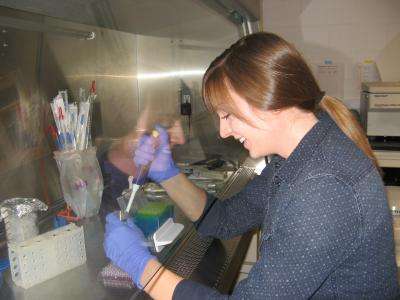Akron researcher awarded NIH grant for advancing 3-D tumor models for anticancer drug testing

The National Institutes of Health is supporting the work of a University of Akron researcher who may hold the key to improving the effectiveness of cancer treatments. The agency has awarded UA's Hossein Tavana a two-year, $511,000 grant to fund his ongoing efforts to improve the testing and effectiveness of anticancer drugs.
Tavana, an assistant professor of biomedical engineering in the College of Engineering, has developed a method to generate 3-D cultures of cancer cells (spheroids) that better model tumors in the body. These improved models have the potential to dramatically improve the screening and discovery of effective chemotherapeutics, Tavana says.
In support of this novel and promising technology, the NIH awarded Tavana its R21 grant, which is defined by the NIH as a developmental research grant intended to support "exploratory, novel studies that break new ground or extend previous discoveries toward new directions or applications."
Drug testing on 2-D cultures of cancer cells, in which thin layers of cells are treated on a flat dish, does not adequately predict how the drugs will behave in the 3-D environment of the body, Tavana says.
Three-dimensional cultures, on the other hand, in which cancer cells aggregate into spherical clusters, better mimic tumors, allowing for more efficient and cost-effective drug screening and discovery, he adds.
This in turn allows researchers to determine which drugs will best treat particular forms of cancer, eliminating the need to treat patients with a battery of drugs in the hope of finding something that works, Tavana explains.
"Rather than throwing a bunch of different drugs into a patient's body, we can say, 'This particular patient, based on this test, will most likely benefit from this chemo drug.'"
Whereas other labs are generating 3-D cancer cell spheroids, or aggregates, one at a time, Hossein's unique method allows him to generate 384 spheroids "robotically and in a single step," drastically expediting drug testing.
The robot, equipped with rows of pipettes, dispenses cancer cells into 384 small wells, or miniature test tubes, each of which contains a liquid that provides nutrients to the immersed cells, allowing them to aggregate as they would in the body, resulting in 384 physiologic tumor models.
Tavana and his research team are currently testing cell lines—cells that have been made immortal so they can be reused over and over—of triple negative breast cancer cells and skin cancer. Next year they plan to use primary, patient-derived cells, which will allow them to test drugs under more realistic conditions.
Provided by University of Akron